In the world of electric vehicles, the competition is fierce, and two standout candidates are the Ford Capri and the Tesla Model Y. Both vehicles represent the future of automotive engineering with their unique features, environmental commitments, and advanced technologies. However, they are tailored for different audiences, which gives each its own set of advantages. Let’s delve into a detailed comparison of these innovative electric SUVs.
Ford Capri vs Tesla Model Y – Which car suits you better?
Both models have their strengths – but which one suits you more?
Compare performance, efficiency, price and space directly: Ford Capri or Tesla Model Y?
Design and Dimensions
The Ford Capri boasts dimensions of 4634 mm in length, 1872 mm in width, and 1626 mm in height, making it a compact yet spacious SUV. With a trunk capacity ranging from 567 to 572 liters, it strikes a balance between practicality and style. On the other hand, the Tesla Model Y is slightly larger, measuring 4751 mm in length, 1921 mm in width, and 1624 mm in height. It offers an impressive trunk capacity of up to 854 liters, which makes it appealing for families and those needing extra storage.
Performance and Powertrain
When it comes to performance, the Ford Capri delivers a range of power options with outputs starting from 286 HP to 340 HP. The electric SUV can accelerate from 0 to 100 km/h in as low as 5.3 seconds and achieves a top speed of 180 km/h, thanks to its well-designed rear-wheel and all-wheel drive systems.
In contrast, the Tesla Model Y offers even more potent performance variants, with power outputs ranging from 299 HP all the way up to 534 HP. With a blistering acceleration of just 3.7 seconds from 0 to 100 km/h in its most powerful variant, the Model Y reaches a maximum speed of 250 km/h. The diverse options bolster its appeal for those craving speed and power on the road.
Energy Efficiency and Range
Both vehicles utilize electric powertrains that promote environmental sustainability. The Ford Capri reveals commendable energy consumption figures between 13.3 to 15.8 kWh/100 km while providing an electric range of up to 627 km in select variants. This makes the Capri a solid choice for long-distance travel without frequent recharging.
On the Tesla side, the Model Y offers a range that extends up to 600 km, but with slightly higher energy consumption figures that can reach up to 17.3 kWh/100 km. The decision on which vehicle might be suitable here leans towards personal requirements — whether it's more about maximum range or efficiency depending on daily driving habits.
Interior and Technology Features
Inside, the Ford Capri intends to offer a modern and high-tech cabin experience with spacious seating for up to five passengers. It prioritizes comfort and convenience, featuring multiple configurations to enhance the driving experience. However, specifics about technological innovations are still being unveiled.
Conversely, the Tesla Model Y is renowned for its minimalist yet technologically advanced interior, including a large 15-inch central touchscreen that controls most vehicle functions. Its ability to provide over-the-air software updates continuously enhances its features over time. The Model Y also offers an optional third row, accommodating up to seven passengers, making it exceptionally versatile for larger groups.
Conclusion
Both the Ford Capri and Tesla Model Y showcase significant advancements in electric vehicle technology, yet they cater to different segments of consumers. The Capri emphasizes efficiency, practicality, and a traditional SUV feel, while the Tesla Model Y shines with high performance, tech-savvy innovations, and superior range. Ultimately, the choice between the two will depend on individual preferences, whether one prefers a more hands-on, engaging driving experience or a technologically rich ecosystem. As the electric vehicle market continues to grow, both Ford and Tesla are well-positioned to lead the way.
Here’s where it gets real: The technical differences in detail
Costs and Efficiency:
When it comes to price and running costs, the biggest differences usually appear. This is often where you see which car fits your budget better in the long run.
Ford Capri has a slight advantage in terms of price – it starts at 36300 £, while the Tesla Model Y costs 38600 £. That’s a price difference of around 2220 £.
In terms of energy consumption, the advantage goes to the Ford Capri: with 13.80 kWh per 100 km, it’s hardly perceptible more efficient than the Tesla Model Y with 13.90 kWh. That’s a difference of about 0.10 kWh.
As for range, the Ford Capri performs barely noticeable better – achieving up to 627 km, about 5 km more than the Tesla Model Y.
Engine and Performance:
Power, torque and acceleration say a lot about how a car feels on the road. This is where you see which model delivers more driving dynamics.
When it comes to engine power, the Tesla Model Y has a convincingly edge – offering 627 HP compared to 340 HP. That’s roughly 287 HP more horsepower.
In acceleration from 0 to 100 km/h, the Tesla Model Y is decisively quicker – completing the sprint in 3.50 s, while the Ford Capri takes 5.30 s. That’s about 1.80 s faster.
In terms of top speed, the Tesla Model Y performs clearly perceptible better – reaching 250 km/h, while the Ford Capri tops out at 180 km/h. The difference is around 70 km/h.
There’s also a difference in torque: Ford Capri pulls evident stronger with 679 Nm compared to 493 Nm. That’s about 186 Nm difference.
Space and Everyday Use:
Whether family car or daily driver – which one offers more room, flexibility and comfort?
Both vehicles offer seating for 5 people.
In curb weight, Ford Capri is minimal lighter – 1914 kg compared to 1976 kg. The difference is around 62 kg.
In terms of boot space, the Tesla Model Y offers clearly perceptible more room – 822 L compared to 572 L. That’s a difference of about 250 L.
In maximum load capacity, the Tesla Model Y performs distinct better – up to 2022 L, which is about 512 L more than the Ford Capri.
When it comes to payload, Ford Capri somewhat takes the win – 587 kg compared to 472 kg. That’s a difference of about 115 kg.
Who comes out on top?
Overall, the Tesla Model Y shows itself to be outperforms in nearly all aspects and secures the title of DriveDuel Champion.
It convinces with the more balanced overall package and proves to be the more versatile choice for everyday use.
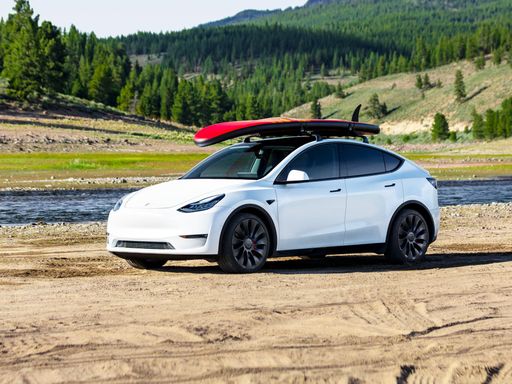 @ Tesla, Inc.
@ Tesla, Inc.
Tesla Model Y
Ford Capri
The Ford Capri is a classic car that captivated enthusiasts with its sleek design and sporty appeal. Its long bonnet and distinctive styling made it a standout on the roads, earning it the nickname "The Car You Always Promised Yourself." With a charismatic blend of performance and charm, the Capri remains a beloved icon in the automotive world.
details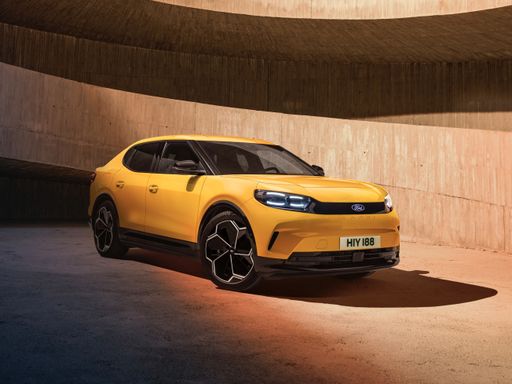 @ Ford Motor Company / Ford Media Center
@ Ford Motor Company / Ford Media Center
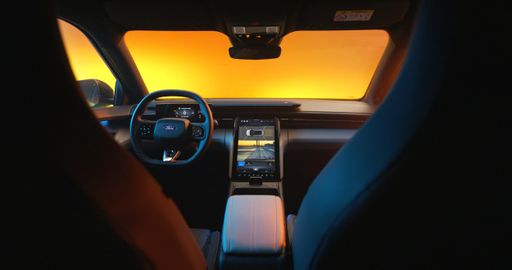 @ Ford Motor Company / Ford Media Center
@ Ford Motor Company / Ford Media Center
Tesla Model Y
The Tesla Model Y blends SUV practicality with sports-car poke, wrapping a roomy, minimalist cabin and handy hatch into a slick, aerodynamic package that feels more Silicon Valley gadget than garage ornament. It’s an ideal pick for buyers who want effortless electric driving, regular software improvements and access to Tesla’s convenient charging network, though style-conscious shoppers should know it’s more about tech and efficiency than classic luxury.
details @ Tesla, Inc.
@ Tesla, Inc.
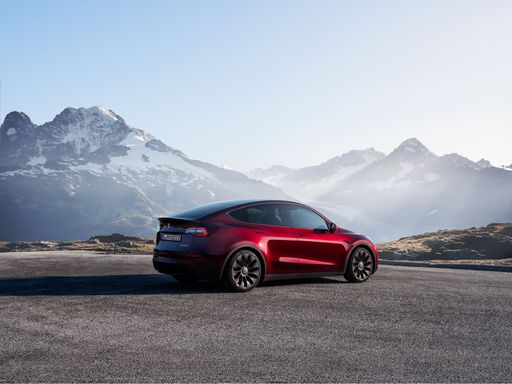 @ Tesla, Inc.
@ Tesla, Inc.
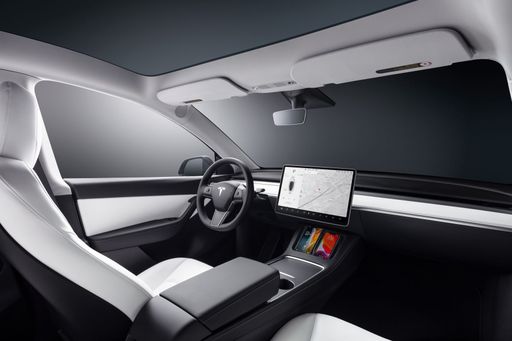 @ Tesla, Inc.
@ Tesla, Inc.
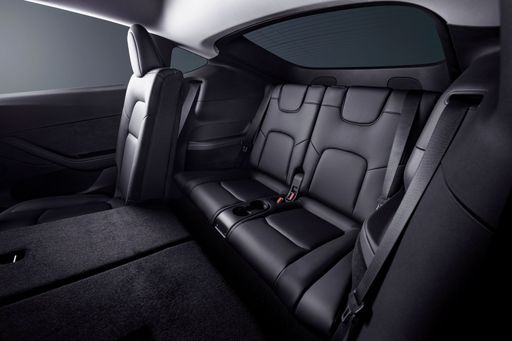 @ Tesla, Inc.
@ Tesla, Inc.
 @ Ford Motor Company / Ford Media Center
@ Ford Motor Company / Ford Media Center
|
 @ Tesla, Inc.
@ Tesla, Inc.
|
|
|
|
Costs and Consumption |
|
|---|---|
|
Price
36300 - 50900 £
|
Price
38600 - 53100 £
|
|
Consumption L/100km
-
|
Consumption L/100km
-
|
|
Consumption kWh/100km
13.8 - 16.4 kWh
|
Consumption kWh/100km
13.9 - 16.2 kWh
|
|
Electric Range
374 - 627 km
|
Electric Range
500 - 622 km
|
|
Battery Capacity
52 - 79 kWh
|
Battery Capacity
64.5 - 85 kWh
|
|
co2
0 g/km
|
co2
0 g/km
|
|
Fuel tank capacity
-
|
Fuel tank capacity
-
|
Dimensions and Body |
|
|---|---|
|
Body Type
SUV
|
Body Type
SUV
|
|
Seats
5
|
Seats
5
|
|
Doors
5
|
Doors
5
|
|
Curb weight
1914 - 2174 kg
|
Curb weight
1976 - 2108 kg
|
|
Trunk capacity
567 - 572 L
|
Trunk capacity
822 L
|
|
Length
4634 mm
|
Length
4790 - 4796 mm
|
|
Width
1872 mm
|
Width
1921 mm
|
|
Height
1626 mm
|
Height
1611 - 1624 mm
|
|
Max trunk capacity
1505 - 1510 L
|
Max trunk capacity
2022 L
|
|
Payload
570 - 587 kg
|
Payload
418 - 472 kg
|
Engine and Performance |
|
|---|---|
|
Engine Type
Electric
|
Engine Type
Electric
|
|
Transmission
Automatic
|
Transmission
Automatic
|
|
Transmission Detail
Reduction Gearbox
|
Transmission Detail
Reduction Gearbox
|
|
Drive Type
Rear-Wheel Drive, All-Wheel Drive
|
Drive Type
Rear-Wheel Drive, All-Wheel Drive
|
|
Power HP
170 - 340 HP
|
Power HP
299 - 627 HP
|
|
Acceleration 0-100km/h
5.3 - 8.7 s
|
Acceleration 0-100km/h
3.5 - 5.9 s
|
|
Max Speed
160 - 180 km/h
|
Max Speed
201 - 250 km/h
|
|
Torque
310 - 679 Nm
|
Torque
420 - 493 Nm
|
|
Number of Cylinders
-
|
Number of Cylinders
-
|
|
Power kW
125 - 250 kW
|
Power kW
220 - 461 kW
|
|
Engine capacity
-
|
Engine capacity
-
|
General |
|
|---|---|
|
Model Year
2024 - 2025
|
Model Year
2025
|
|
CO2 Efficiency Class
A
|
CO2 Efficiency Class
A
|
|
Brand
Ford
|
Brand
Tesla
|
Is the Ford Capri offered with different drivetrains?
The Ford Capri is offered with Rear-Wheel Drive or All-Wheel Drive.
The prices and data displayed are estimates based on German list prices and may vary by country. This information is not legally binding.
